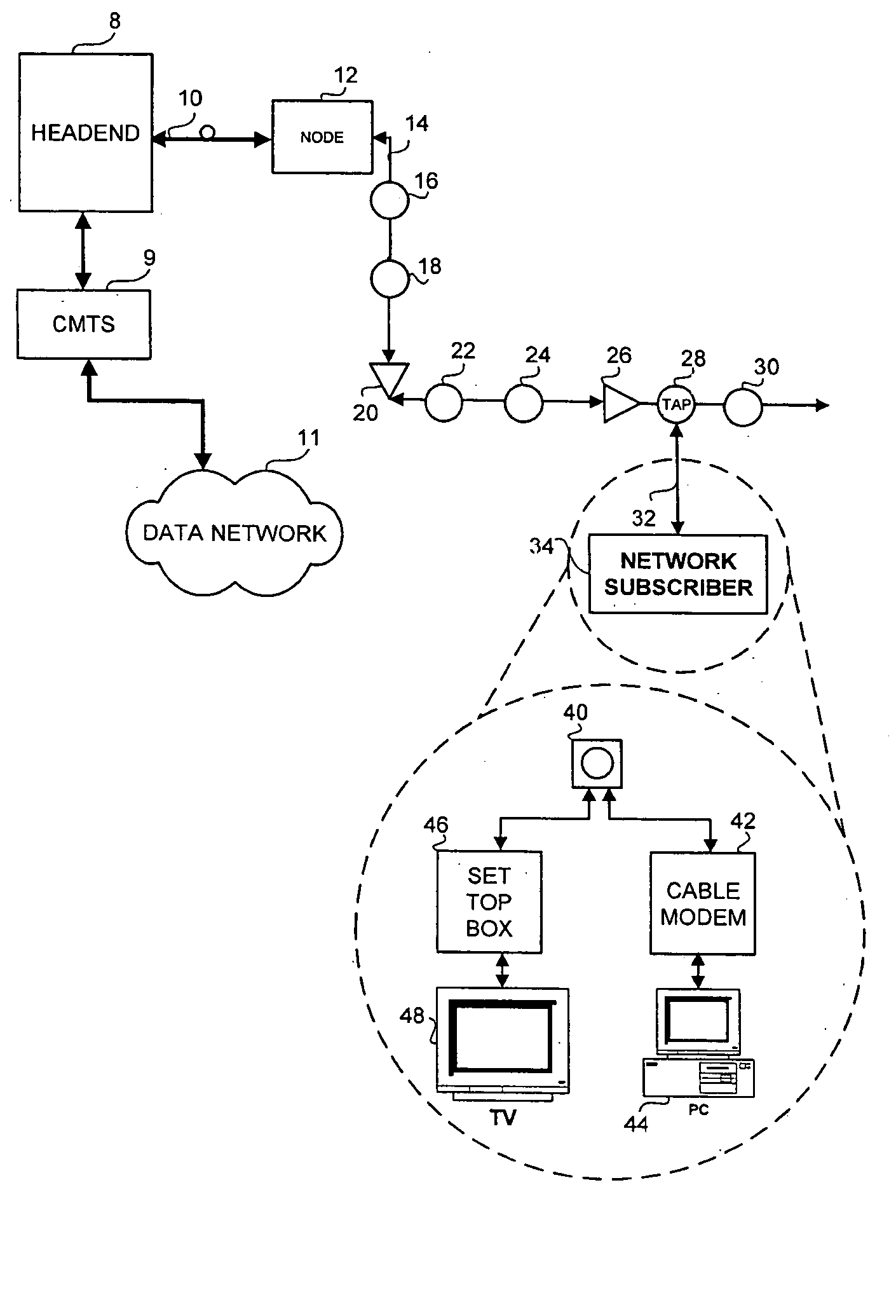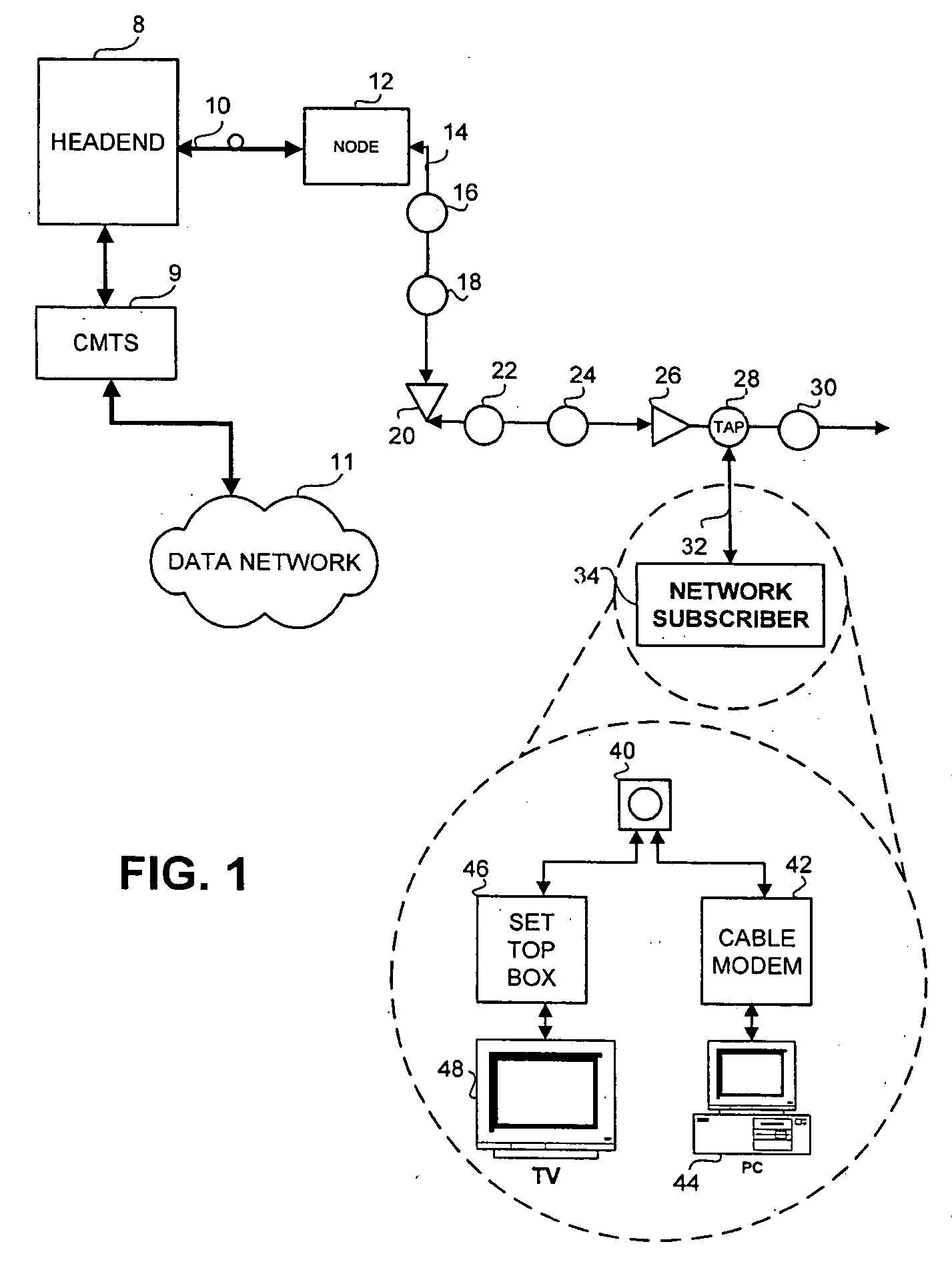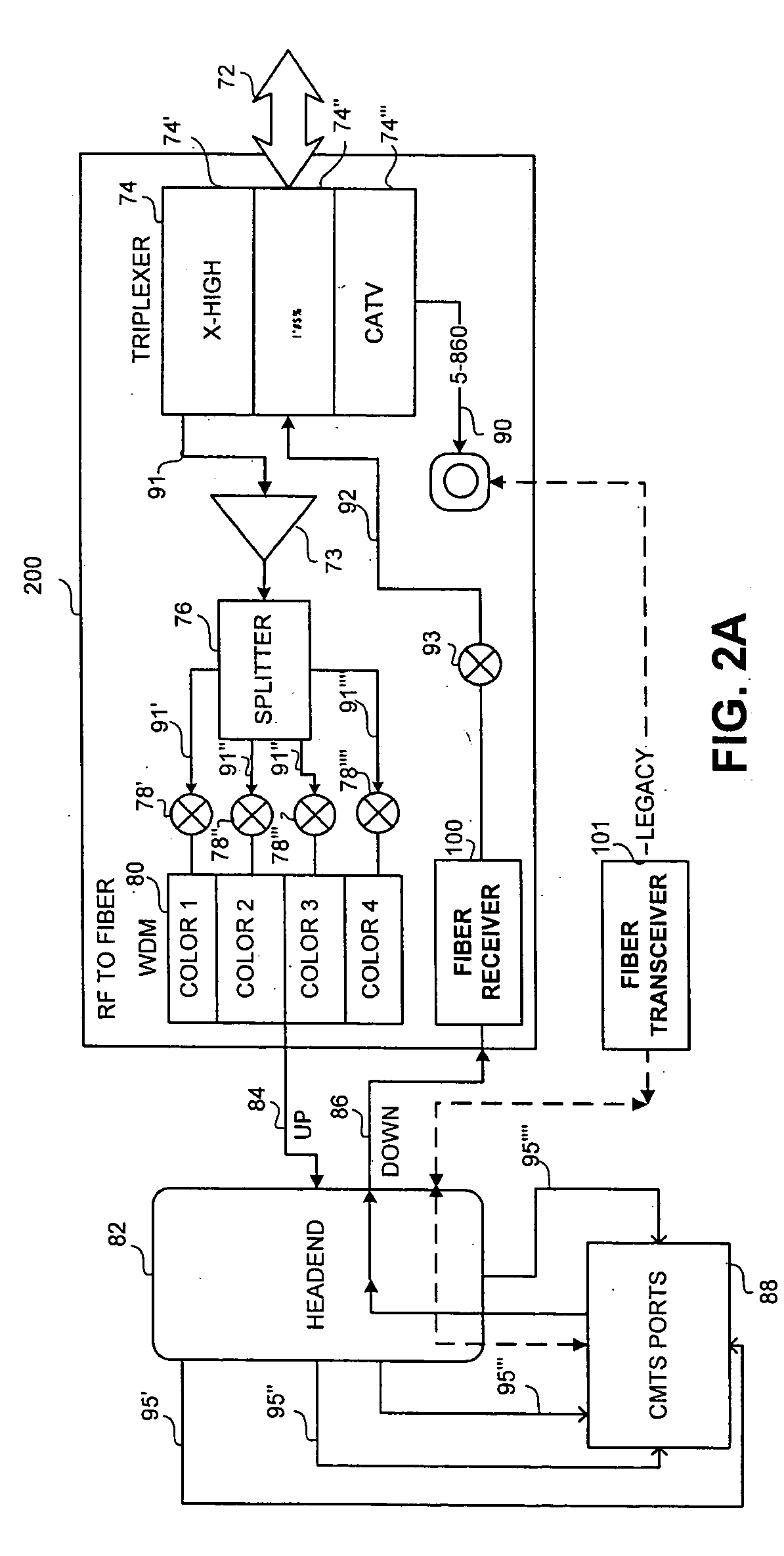Wideband node in a cable TV network
- Summary
- Abstract
- Description
- Claims
- Application Information
AI Technical Summary
Benefits of technology
Problems solved by technology
Method used
Image
Examples
Embodiment Construction
[0021] A new and novel node device is disclosed which enables transmission of a wideband signal consisting of the legacy spectrum of about 5-860 MHz as well as a new downstream spectrum of about 1000-2000 MHz and a new upstream spectrum of about 2000-3000 MHz, which enables transfer of data in the upstream direction employing multiple upstream bands without making substantial investment in upstream physical node splitting thus providing networking services to residential subscribers, as well as to small and medium-sized businesses (SMB).
[0022]FIG. 1 illustrates a simplified structure of an existing CATV network. Signals from a network head-end 8 are transmitted and received via the fiber trunk section 10 of the network to a conventional CATV node device 12. The head-end may include one or more DOCSIS or other Cable Modem Termination System (CMTS) devices 9. The CATV node device 12 is connected to network subscribers 32 via one or more ports where each port connected to a distinct d...
PUM
 Login to View More
Login to View More Abstract
Description
Claims
Application Information
 Login to View More
Login to View More - R&D
- Intellectual Property
- Life Sciences
- Materials
- Tech Scout
- Unparalleled Data Quality
- Higher Quality Content
- 60% Fewer Hallucinations
Browse by: Latest US Patents, China's latest patents, Technical Efficacy Thesaurus, Application Domain, Technology Topic, Popular Technical Reports.
© 2025 PatSnap. All rights reserved.Legal|Privacy policy|Modern Slavery Act Transparency Statement|Sitemap|About US| Contact US: help@patsnap.com



